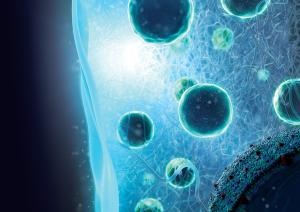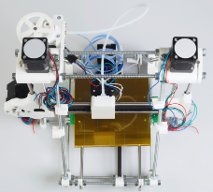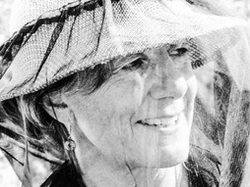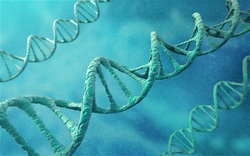
An artist's impression of light-sensitive cells encapsulated in an implanted gel (Image: Harvard Bio-Optics Lab)
Light can now be used to heal diabetes in mice. By implanting a transparent gel that contains genetically modified light-sensitive cells, researchers have demonstrated a new type of implant that could one day be used to treat disease and monitor toxins in people.
"Light is a great tool to interface with biological systems, but there is a fundamental problem. It gets scattered when it hits tissue, and at depths much thinner than our skin," says lead author Myunghwan Choi of Harvard Medical School in Boston.

When you produce something yourself instead of purchasing it, that changes your relationship to it," says Chelsea Schelly, assistant professor of social sciences. She's discussing the current popular trend of 3D printing. "You are empowered by it."
That principle might sound simple, but its ramifications can be wide ranging, especially for middle and high school educators. That's where Schelly's research began: studying a teacher workshop coordinated by 3D printing guru Joshua Pearce, an associate professor of materials science and engineering and electrical and computer engineering.

Honeybees have thrived for 50 million years, each colony 40 to 50,000 individuals coordinated in amazing harmony. So why, seven years ago, did colonies start dying en masse? Marla Spivak reveals four reasons which are interacting with tragic consequences. This is not simply a problem because bees pollinate a third of the world’s crops. Could this incredible species be holding up a mirror for us?
Marla Spivak researches bees’ behavior and biology in an effort to preserve this threatened, but ecologically essential, insect.

Scientists have recorded data including Shakespearean sonnets and an MP3 file on strands of DNA, in a breakthrough which could see millions of records stored on a handful of molecules rather than computer drives.
We have looked at how a transistor works, the fundamental unit of classical computers, and how a quantum computer works in theory, taking advantage of quantum superposition to hold exponentially more information than classical computers. Now we look at the practical side of making a quantum bit, or qubit. How do you put it in a state where it is stable? How do you read and write information on it? These processes are described for a solid state qubit - a phosphorous atom in a silicon crystal substrate. Both the electron and the nucleus of the phosphorous atom can be used as qubits.

Apr. 22, 2013 — Running two computer models in tandem, scientists from the University of New Hampshire have detailed for the first time how thermoelectric power plants interact with climate, hydrology, and aquatic ecosystems throughout the northeastern U.S. and show how rivers serve as "horizontal cooling towers" that provide an important ecosystem service to the regional electricity sector -- but at a cost to the environment.